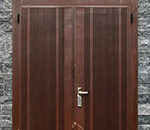Japan is ahead of the curve in many ways, and advertising is no exception. Apparently the Japanese facial tissue market has been tough recently (who knew?), so paper goods manufacturer Nepia, along with Japan’s largest advertising agency, Dentsu, created a stop-motion homage to the versatility of tissue paper:
The ad, directed by Fuyu Arai and Hitoshi Sato, has been a huge success, attracting international attention not only in the business world, but in artistic publications as well. Luckily for us photographers, Dentsu also released this little making-of short that offers a little peek into the process behind this whimsical work of photographic animation.
Although it doesn’t lay out the specifics of how the piece was created, it tells a visual story of the general idea behind stop-motion movie making. It is done more like cartoon cell type animation than traditional videography – in fact, a video camera isn’t used at all. Every frame of the film is a still photo, and each must be crafted by hand the same way a traditional animator would draw out a scene on paper; for this relatively short work, that still adds up to 2000-3000 individual shots (depending on the frame rate they used). Each one is designed, drafted, assembled, lit, photographed, edited, and linked up to the rest in order to tell a cohesive story.
Such a huge undertaking requires a team of designers, crafters, photographers, editors, and other specialists to form the tissue paper animals, design their movement, and capture it in just the right way. A project like this would happen in several stages, with the idea being formed and put into storyboard format first, before being further tested, refined, and perfected. Only then would the shooting be arranged.
The light used is very simple and versatile – a single directional light from above, creating deep shadows which bring out the tissue’s texture and shape. It also ensures that the puppeteer’s (can I call him that?) hand won’t easily get in the way of the light, and it can remain consistent throughout the shoot.
Small wires are placed inside the animals during construction to allow them to be positioned as needed. Wires are also used to hold the animals in place while in visual motion; these are edited out later, in post-production. The shot is framed on a tripod, and the team simply moves the figure as needed for each frame and shoots it, repositioning it again for the next frame and shooting, and so on.
When all the photos are made, the thousands of images are then edited together into the final cut – one which has now redefined the way I, for one, think of tissue paper.
Like This Article?
Don't Miss The Next One!
Join over 100,000 photographers of all experience levels who receive our free photography tips and articles to stay current:










Leave a Reply